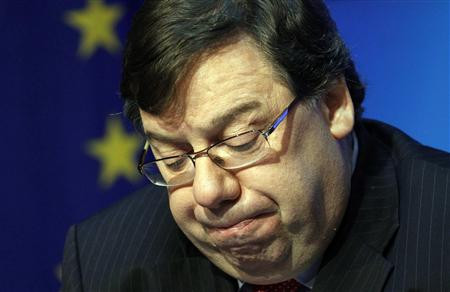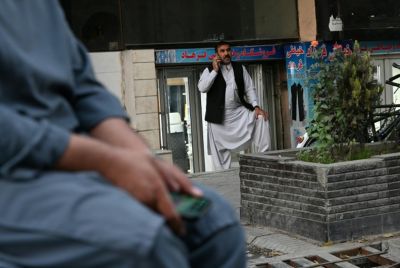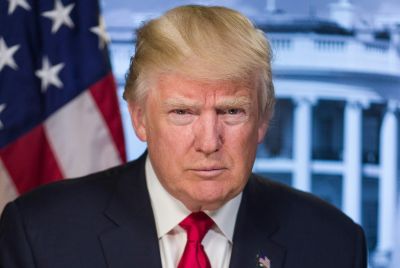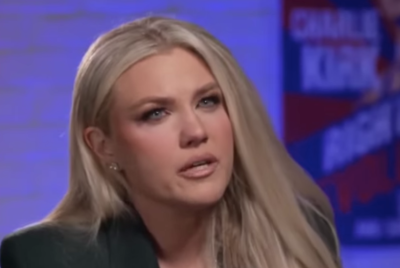Irish elections: Fianna Fáil's slip before the fall

The shade of Éamon de Valera must be having a wry smile. The party he founded in 1926, Fianna Fáil, was well and truly hammered in the Donegal South West by-election, losing to the candidate of Sinn Féin on 26 November 2010. As Fionnan Sheahan, Political Editor of the Irish Independent newspaper on Saturday, 27 November points out: "The party brand name hasn't won a by-election since 1925, when the post Civil-War version of the organisation was led by Éamon de Valera -- so the result will be a big boost for Sinn Féin."
Ms Sheahan warns winning Sinn Féin candidate, Pearse Doherty, not to get too comfortable though, as there's a long history of Irish by-election winners, losing spectacularly come the general election. As a general election is called for January 2011, with Fianna Fáil having lost the support of its coalition partner, the Green Party, Mr Doherty may go down on record as one of the shortest serving TDs (Teachta Dála) in Ireland's parliamentary history.
Elected on the fourth count under Ireland's single transferable vote system and a former member of Ireland's Senate (Seanad Éireann), Mr Doherty told RTÉ News shortly after the final results were announced: "Today's result is a vote for change. It is an endorsement of Sinn Féin's argument that there is a better way."
Pearse Doherty was the clear leader from the first ballot count on a turnout of just over 57 per cent. The surprises were the extent to which Fianna Fáil's vote collapsed, although opinion polls prior to election day were surprisingly accurate on first count figures, and on the poorer showing than many expected of the Labour candidate. The total valid poll was 34,424 giving a quota of 17,213. In a field of six candidates, the first count votes included:
Pearse Doherty (SF) 13,719 - 39.9%
Brian Ó Domhnaill (FF) 7,344 - 21.3% - The Party had won the seat at the general election with just over 50 per cent of the vote.
Barry O'Neill (FG) 6,424 - 18.6%
On the fourth, final count, Mr Doherty had secured 16,897 votes and was declared elected, though failing to reach the quota. Fine Gael just managed second place. Left wing candidates got over 60 per cent of the first preference votes in this long-established, conservative seat.
The question for British people is: do we want this electoral system in place of first past the post? In the Republic of Ireland, the question must be: did a left-wing party like Sinn Féin really win an endorsement to scupper the Irish Budget on 07 December 2010 as it vows to do, partly on the grounds that it resents any interference in Irish affairs by the IMF? To the IMF can no doubt be added the European Central Bank (ECB) and the body of EU Finance Ministers, with the British Chancellor George Osborne, arranging a bilateral loan from the UK to Ireland as part of its €85 billion bailout package. One old lady in Dublin commented that it was like being (back) in the Commonwealth!
President of Sinn Féin, Gerry Adams, was obviously delighted with the by-election result and has decided to stand as a candidate in the Irish general election early next year. He claimed that the electorate would not endorse the usual coalition partnership between Fine Gael, a right-wing party and Labour, a party of the left, which the Donegal South West by-election made plain. Mr Adams called upon Labour Party leader, Éamon Gilmore, to re-think the Party's traditional alliance.
Fine Gael when it has been in power has done so with Labour as a junior coalition partner. The Party was founded in 1933 with the amalgamation of three parties, one of which was the fascist National Guard ("Blueshirts") - extended arm salute and all. It is seen to be generally more to the right of Fianna Fáil and its current leader is Enda Kenny. It is Ireland's second largest political party with 51 seats in the Dáil and has the largest number of seats in Irish local government - 559 of 1627.
Since Fine Gael's founding, it has been in power (with Labour) on six occasions, the most recent being 1994-1997, when John Bruton was leader. In recent years, the Party's share of the electorate has hovered between 22 and 28 per cent. In British/European terms, it can be viewed as a Conservative/Christian Democrat Party promoting an enterprise culture, in favour of a sound monetary policy and a respect for the rule of law. As for Labour being its "natural" ally - well this is Ireland and politics don't follow the standard right-left divide.
Fianna Fáil, in theory to the right of Labour and left of Fine Gael, is rather a broad church encompassing members of the left like Britain's Labour leader Ed Miliband, and right, like Prime Minister David Cameron under one roof. It could be seen as a permanent Conservative/Lib Dem coalition party. In both 2002 and 2007 general elections it won 41.5 per cent of the vote and since the 1930s, its share of the electorate has dropped below 40 per cent only twice. In 1992 and 1997, its share was 39 per cent. That is going to change very dramatically if the latest opinion poll is even slightly accurate!
The Irish understand the differences, though opponents of these two main parties claim that for all practical purposes there's nothing between them in policy and suggest that they should simply amalgamate. For the outsider, it's best to understand that it goes back to the Treaty of 1922 (with the UK). Anti-Treaty, Éamon de Valera = Fianna Fáil; Pro-Treaty, Michael Collins = Fine Gael. The attitude to the 1922 Treaty and subsequent Irish Civil War, go a long way to explain why Irish politics do not follow a usual right versus left pattern.
Is Donegal South West a typical Irish constituency? No, its a million miles from Dublin with a substantial Irish speaking population, hit by high unemployment, emigration, an ailing fishing industry and with many farms that are simply not viable even when the farmer has a secondary occupation, which is often the norm. Unfortunately, that second occupation was too often in the collapsed building and construction industry. With no large towns and not very good communications with the rest of the Republic, its natural service centre is Derry (Londonderry) in Northern Ireland. Irish speaker Pearse Doherty ticked a lot of the boxes for Donegal folk and got elected.
Even if St Patrick himself had been the Fianna Fáil candidate, it is difficult to see any other result in Donegal South West. Only the day before polling on Wednesday, 24 November, the Irish PM, Brian Cowen, unveiled a drastic four-year "recovery plan" promising €3 billion in social welfare cuts, as much in additional taxes and up to 25,000 public sector redundancies. Sinn Féin described it as "a plan for national recession".
The Red C opinion poll quoted by many newspapers throughout Ireland on 03 December 2010, showed that support for Fianna Fáil had slumped to only 13 percent with leader Brian Cowen's approval rating a pretty awful eight per cent. Fine Gael are on 32 per cent and Labour 24 per cent. The real winner is Sinn Féin with 16 per cent - double the vote at the last general election. Independents poll 11 per cent and the Greens, just three per cent.
Ireland may really see the end of an era early in the New Year.
© Copyright IBTimes 2025. All rights reserved.





















